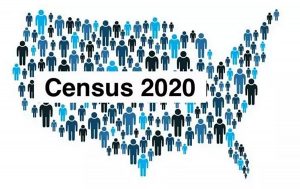Census deadline looms and residents urged to respond
University of Illinois Extension — August 17, 2020
Hundreds of federal programs distribute funds based on census data, including Medicaid, federal grants, and currently census data is being used to address the current COVID-19 pandemic efforts. (Courtesy of U.S. Census Bureau)
The U.S. Census Bureau had originally extended the collection deadline through October, but a recent announcement set a final deadline of Sept. 30, a month earlier than expected.
The early deadline has renewed concerns that Illinois communities will be under-represented and lose important federal support, said Susan Odum, University of Illinois Extension community and economic development specialist.
“If all Illinoisans are not counted during the 2020 Census, fewer federal resources will come back to our state,” Odum said. “These resources affect your community, your county, and your state in so many ways.”
Hundreds of federal programs distribute funds based on census data, including Medicaid, Supplemental Nutrition Assistance Program, Children’s Health Insurance Program, Medicare Part B, Federal Pell Grants, the National School Lunch Program, Temporary Assistance for Needy Families, Section 8 Housing Choice Vouchers, Title 1 Education Grants, Special Education Grants, and Head Start.
Census data directs funding for emergency planning, preparedness and recovery efforts. Currently, census data is being used to address the current COVID-19 pandemic efforts.
The Coronavirus Aid, Relief, and Economic Security Act allocates payments to state, local, and tribal governments based on the most recent population data provided by the Census Bureau.
Additional programs include low income home energy assistance, highway planning and construction, the breakfast programs for schools, community development block grants, unemployment insurance, water and waste disposal systems for rural communities, firefighting grants, and weatherization assistance for low income persons.
2020 Census data will be used to redraw congressional and state legislative district boundaries. “Without a full and accurate count, legislative district maps won’t accurately reflect our state and where people live within our state,” Odum said. “The 2020 Census provides data that communities can use to make critical decisions for the next decade, including the need for schools, hospitals, clinics, roads and other essential programs and services that support families, older adults and children.”
Businesses also use census population trends and growth projections to make decisions, such as where to hire new employees and open new stores, restaurants, factories or offices.
There are three ways to respond: by mail, phone, or online. “Responding online is the easiest and fastest way to complete the 2020 Census, plus it is safe and secure,” Odum said. “You can respond online to the 2020 Census even if you did not receive a letter or paper questionnaire. Simply go to My2020Census.gov, click on start questionnaire, then select the link that says, ‘if you do not have a Census ID, click here.'”
During August, official census workers canvas people who have not yet responded. By law, all census data is confidential and private and cannot be used by any government agency or court.
“Whether you respond by mail, by phone, online or with the assistance of a census taker, your response matters,” Odum says. “Ensure your community, county and state have adequate representation, funding, and data to support decision making for the next decade.”






